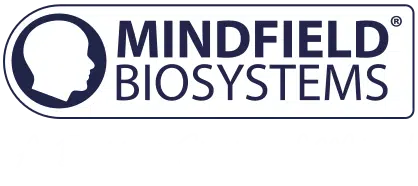
Breathing Explanation
What is breathing training?

Breathing training in itself is initially the pure training of breathing. This is done through breathing exercises or concentration and rest exercises. Breathing training occurs in many different areas of life, from sports to meditation.
The goal is usually to improve breathing in general. This applies not only during breathing training, but also in everyday life when one is not actively concentrating on breathing. This can help with circulatory problems, coughing or premature exhaustion, for example.
You often want to increase your physical endurance for athletics, cycling, swimming or similar sports.
However, it is also possible to achieve a particularly relaxed or clear state of mind through breathing training. It is no coincidence that breathing has also been an important part of martial arts, meditation or hypnosis in many cultures for thousands of years.
The importance of breathing
Breathing is something special because our state of mind is reflected very well and directly in our breathing. When we are stressed and tense, we usually breathe quickly, irregularly and shallowly. Both positive and negative stress are easily recognizable and measurable in this way. On the other hand, when we are relaxed and calm or asleep, our breathing is usually slow, even and deep.
If our unconscious breathing patterns are disturbed by chronic stress, pain or other psychological and physical stress, this often leads to discomfort and permanent stress. Breathing training can train and improve breathing, achieve deep states of relaxation and significantly increase general well-being. Therefore, breathing plays a major role in almost all relaxation techniques such as autogenic training, yoga, meditation and progressive muscle relaxation. With breath biofeedback and devices such as the eSense Respiration, there is now a modern tool to improve breathing.
When does breathing training count as biofeedback?

In contrast to other biofeedback parameters, breathing is easy to perceive yourself. It is also one of the few biofeedback parameters that we can consciously control and even control.
With biofeedback, measuring devices and a computer (or smartphone) are used to report body processes that are hardly or not at all perceived, and thus made visible and conscious. This is the feedback loop in biofeedback training. In everyday life we are otherwise busy with other things and therefore often do not notice our own breathing enough.
Although breathing is easily perceptible and breathing can be felt and assessed well without devices, this remains relatively inaccurate without measuring devices. Similar to measuring the heart rate with 2 fingers and a watch instead of a real heart rate monitor.
We therefore count breathing feedback training among the biofeedback methods if it takes place with the help of a measuring and feedback device. This enables the direct recording and evaluation of the current condition, which in turn constitutes correct biofeedback. Further general information on biofeedback can be found here.

Compared to other biofeedback methods, breathing feedback training has the advantage for the beginner that breathing is particularly easy to control and actively influence.
The first successes are realized almost immediately, but long-term relaxation is a very individual topic. Even if biofeedback methods generally bring advantages in terms of precision and learning speed, it must always be considered that every person has learned characteristics by nature (as well as through social conditioning), which lead to different good results depending on the method.
Nevertheless, breathing exercises with breath feedback are a very suitable introduction to relaxation techniques for most people. We have developed our own breathing feedback device for precisely this purpose: the eSense Respiration. If you want to start with a breathing feedback training to consciously relax, you automatically have a good device for home use.
Since there are many different techniques, the way they are used is also different. It can range from simply observing breathing (breathing curve), to a sound signal, a breathing specification, to visual feedback in the form of a video.
Breathing feedback devices often have a guide mode, or default mode, in which breathing is commanded in a specific pattern and you have to ‚rebreath‘ it. At Mindfield, we mainly work with this method in our eSense app.
With breath feedback, there is also the option of classifying and evaluating breathing based on its depth and frequency. In this way, feedback can be given via breathing, which can then adapt autogenously.
Since you can concentrate on your breathing and actively influence it, it is particularly easy to start breathing training. The first successes are visible almost immediately.
How time-consuming and expensive is breathing training?
You can start immediately with breathing training. It is possible to simply follow the given patterns or start with meditation and breathing techniques.
After learning from a few training sessions, breathing biofeedback leads to a new feeling of disconnection and full focus on breathing. Over time, also increasingly without feedback from biofeedback, as better self-awareness is developed.
A breathing feedback device is a good assistant here that saves quite a bit of time. A breathing feedback device for training at home starts with costs in a low, 3-digit range (e.g. the eSense Respiration) and ends with professional devices for practices in the 4-digit range.
What parameters of breathing are there?
There are two main measures of breathing, respiratory amplitude (RA = Respiration Amplitude, or ‚how deep you breathe‘) and respiratory rate (breaths per minute, or ‚how often you breathe‘).
The RA (respiratory amplitude) describes the depth of breathing. In everyday life, shallow breathing is also called shallow breathing. But you can also consciously create very deep breaths, which exchange all the air in the lungs in one breath. If you are particularly experienced, you can still distinguish between chest breathing and abdominal breathing, or between the respective proportions.
Breathing rate is a measure of how many times you inhale and exhale in one minute. Both variables are always related to the current oxygen requirement of the body, so the frequency and depth of breathing automatically increases under stress. For example, when you start running, your breath follows you (with a little delay) and you also start breathing faster.
In particular, the relationship and interaction between amplitude and frequency gives a comprehensive and detailed picture of your breathing.
